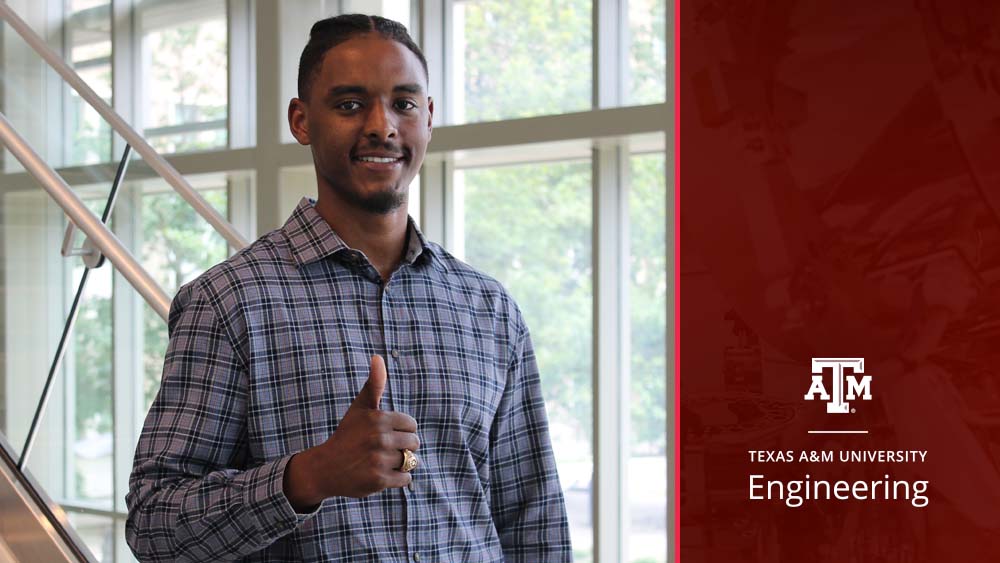
Improving the delivery of drugs involves finding new materials to ease the introduction and release of these drugs into the body. Ryan Davis, a master’s student in the Department of Biomedical Engineering at Texas A&M University, aims to focus his research on advanced biomaterials for sustained and prolonged release of therapeutics for tissue regeneration.
Davis’ review paper focused on the current state of a new class of 2D nanomaterials and how they are used for drug delivery. The process helped Davis lay the groundwork of current research efforts, which will help guide his work with nanomaterials and hydrogels — a 3D network of water-attracting polymers. Dr. Akhilesh Gaharwar, associate professor and Davis’ lab director, applies these types of nanotechnology to tissue engineering and cancer therapeutics.
“We have started to lean toward delivery for cartilage and bone repair,” Davis said. “That might not be where we continue, but that's where I am right now because the hydrogels I'm working with can be applied to a lot of different diseases or types of treatment.”
2D nanomaterials have a flat structure with lateral dimensions on the nanoscale or microscale and a thickness of a single to a few atomic layers.
“One way to think about these nanomaterials is like a sheet of paper. You have two long dimensions, but the thickness is super thin. With nanomaterials, that thickness would be in the nanolength scale ranging between 1 to 5 nanometers. They're beneficial because they have the highest specific surface area of any type of material, providing a large number of contact points and increasing the propensity for surface interactions. These 2D nanomaterials allow for high drug loading."
Another application could be cancer treatment. Current cancer, and many other disease-treating, drugs are hydrophobic (water repulsive). When they enter the body, proteins often attack the drug, making them unstable in the body.
2D nanomaterials can act as carriers to improve the stability of those drugs by releasing at a very slow rate and shielding them from protein interactions.
“The 2D nanomaterials can promote sustained deliveries to keep the drugs in the body for a prolonged duration and to keep a sufficient amount of the drug to be therapeutically active in the body,” Davis said. “It's more beneficial to design carriers that release in sync with disease activity rather than too fast or too slow.”
Davis plans to apply for several fellowships to continue this research and help solve other problems in biomedical spaces. Some options include the National Science Foundation's Graduate Research Fellowship Program, the National Institutes of the Health's F31 Predoctoral Fellowship and the Department of Defense's National Defense Science and Engineering Graduate Fellowship Program.
“I see how many problems we still have like cancer, diabetes or arthritis,” Davis said. “As much as we have advanced, there's still a long way to go. If I can work on something, why not work on something that can help people, especially the people in my home.”